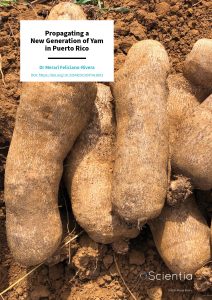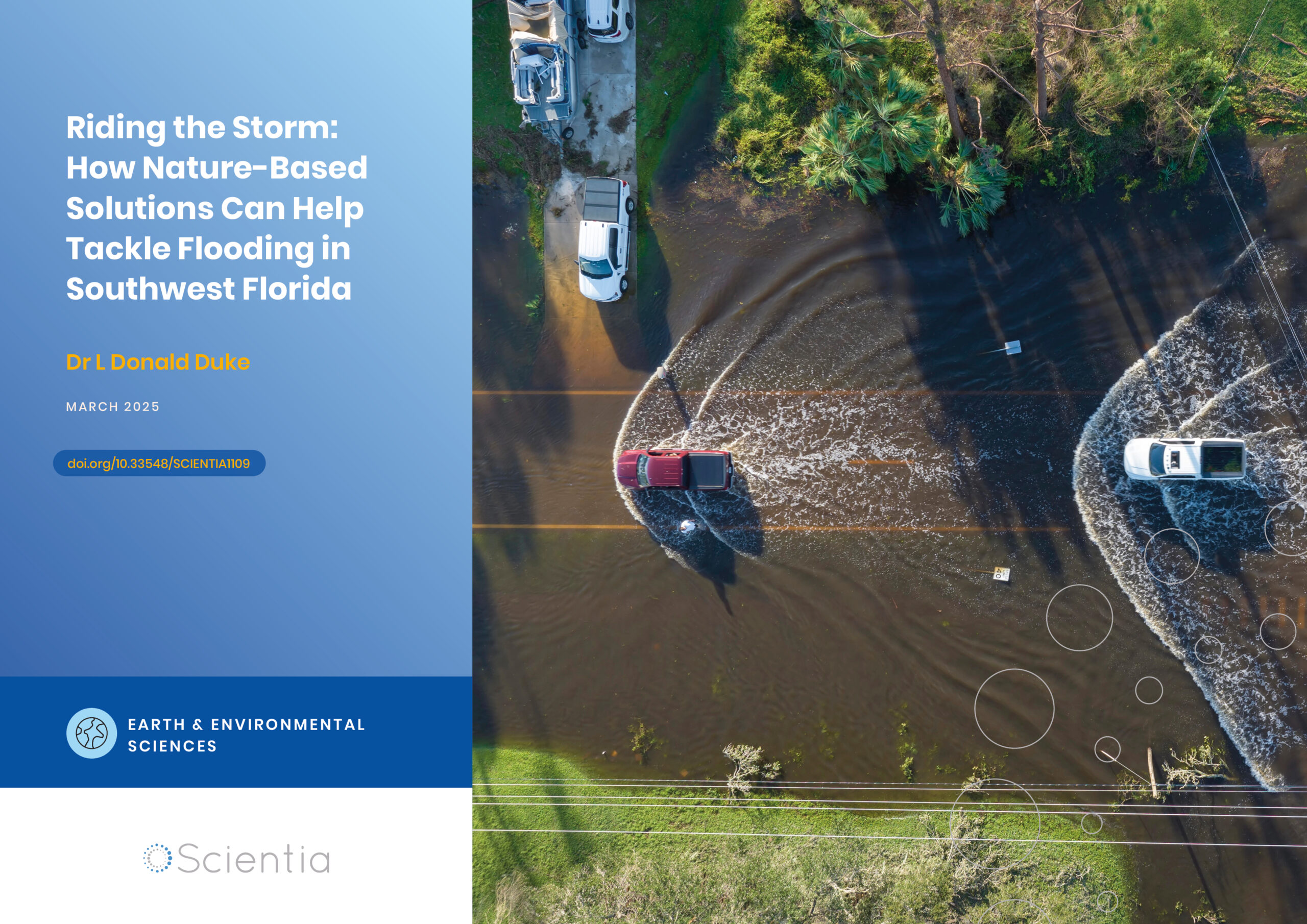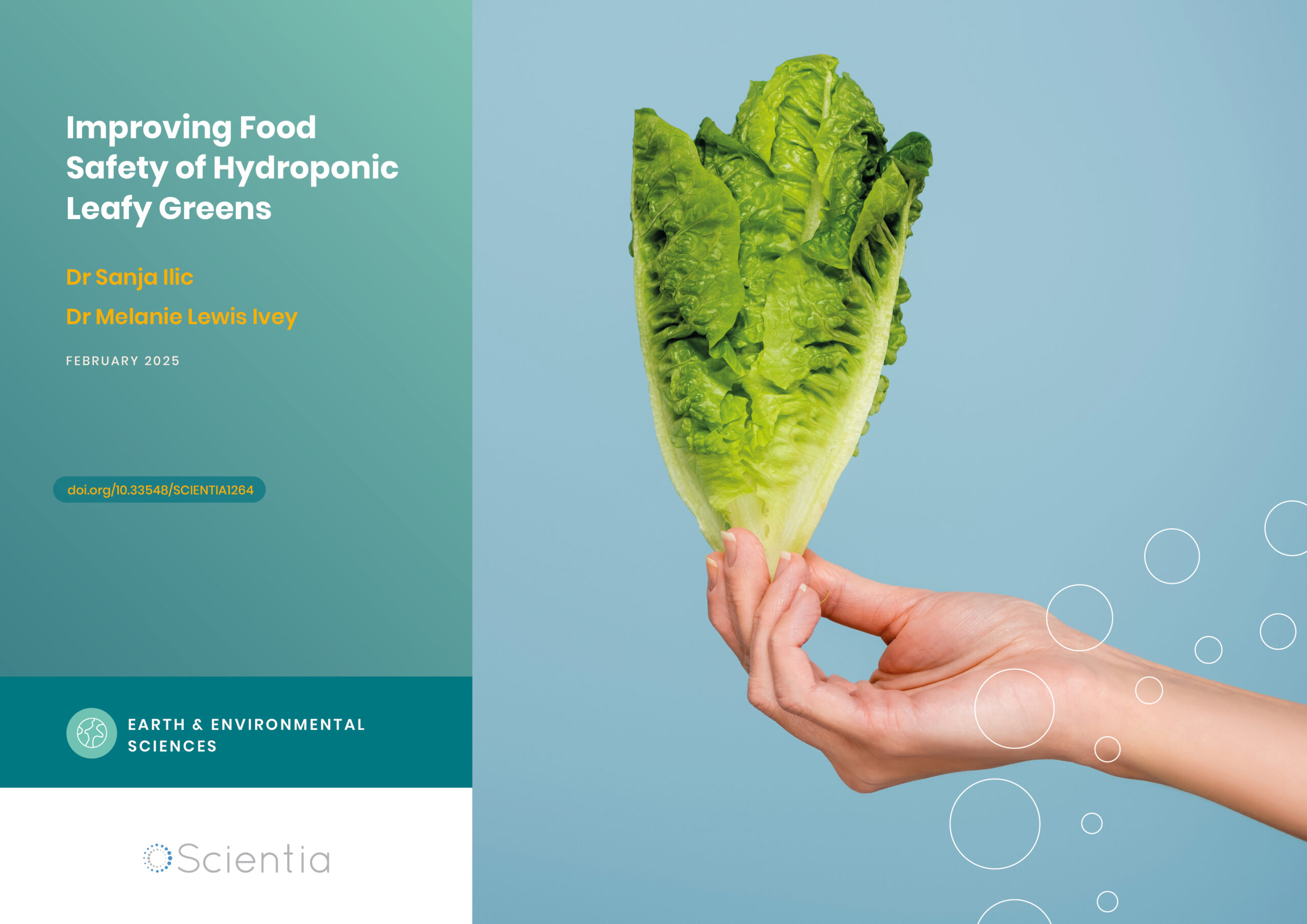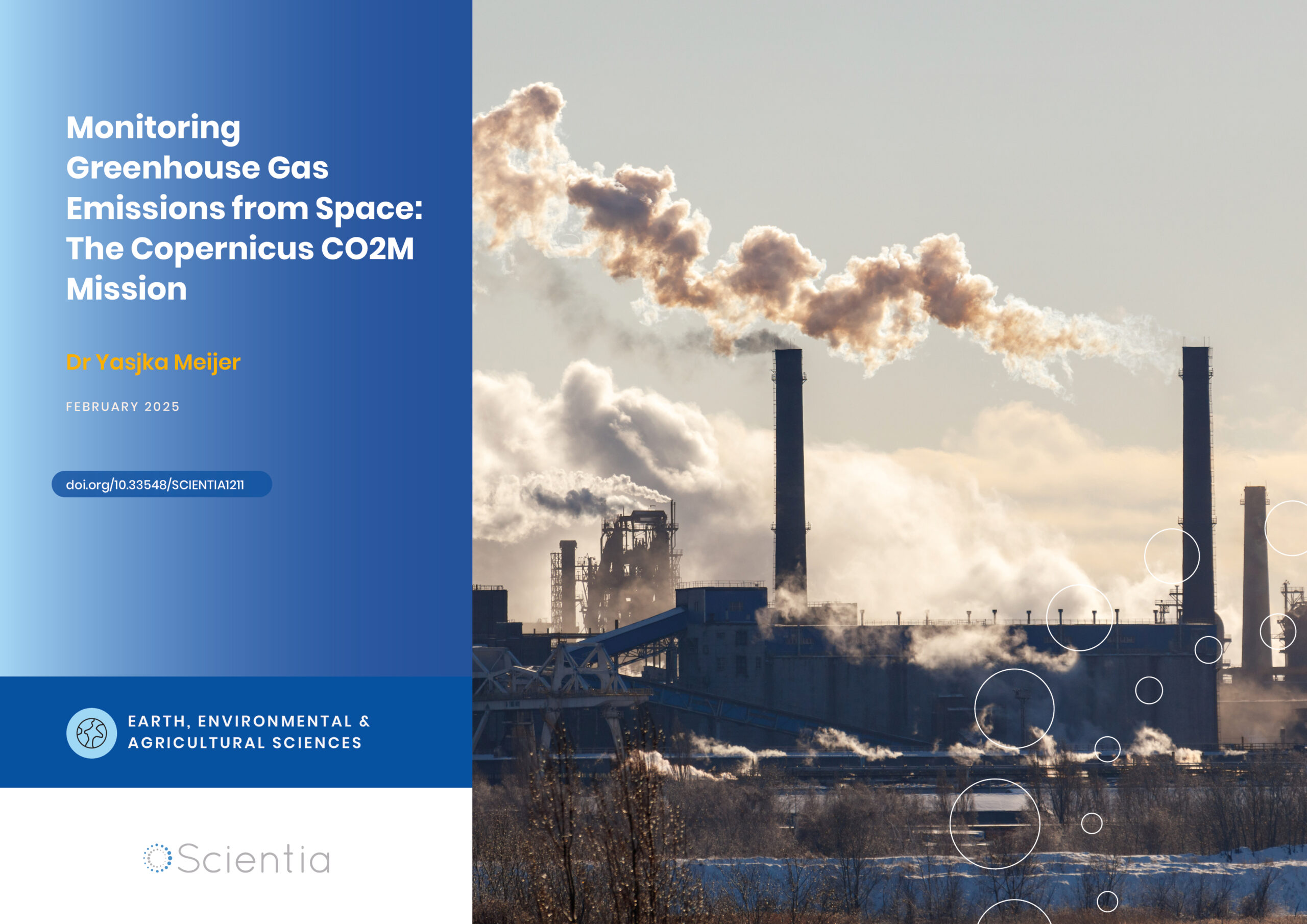Dr Merari Feliciano-Rivera | Propagating a New Generation of Yam in Puerto Rico
Yams are an essential nutritional crop in Puerto Rico, but unfortunately, years of poor management have left farmers with a lack of good-quality seeds from which to grow new plants. Dr Merari Feliciano-Rivera from the University of Puerto Rico at Mayagüez has been working with a team of scientists and students to address this problem and propagate a new generation of disease-free seeds.
Why Is the Yam so Important?
As an island in the Caribbean, Puerto Rico is particularly vulnerable to adverse weather events such as hurricanes. In 2017, the Island suffered its worst-ever natural disaster when it was hit by Hurricane Maria, which killed nearly 3,000 people. After this devastation, Puerto Rico faced the secondary problems of providing housing, medical aid, and food to the population. Many of the crops grown on the Island had been wiped out, and transport links were erratic, meaning that food shortages rapidly became an issue.
As an underground crop that grows ‘tubers’ much like potatoes, the yams grown in Puerto Rico were less affected by the disaster than other crops and provided a vital nutrition source for many islanders during recovery after the hurricane. Yams are high in fibre, vitamin C, and other nutrients vital to humans and play an important role in the everyday diet of many Puerto Ricans.
Although Puerto Rico imports over 80% of its yams, there is scope to grow more of their own and, in doing so, work towards becoming self-sufficient. The factors currently limiting the amount of yam production include:
- High production costs.
- The low availability of high-
quality seeds. - The prevalence of diseases that affect these underground crops.
The Need for Yam Seed
Dr Merari Feliciano-Rivera from the University of Puerto Rico at Mayagüez is leading a team of scientists trying to solve some of the problems facing yam production in Puerto Rico. The most common method of propagating new yam plants is by taking small tuber material or tuber sections from existing yam plants and growing them into new ones. This is called vegetative propagation. However, when used on a commercial scale, such as a yam farm, problems can arise. When a plant of poor quality is propagated, it generally means that all the plants will be of poor quality and, therefore, much more susceptible to disease. Poor-quality plants also produce smaller and fewer yams. Furthermore, if the original plant is harbouring a disease, the entire crop will also be much more likely to develop that disease, which can lead to the complete failure of the crop.
How Else Can a Yam Grow?
Dr Feliciano-Rivera and her colleagues have been looking into alternative ways to propagate yams to grow healthy, disease-free plants and seeds. Under laboratory conditions, it is possible to take small disease-free explants from yam mother plants unaffected by any disease and grow them into healthy adult plants, using sterile conditions and the application of plant nutrients and hormones to stimulate growth. Using tissue culture technology, a small explant from one plant can be multiplied into hundreds or thousands of adult plants.
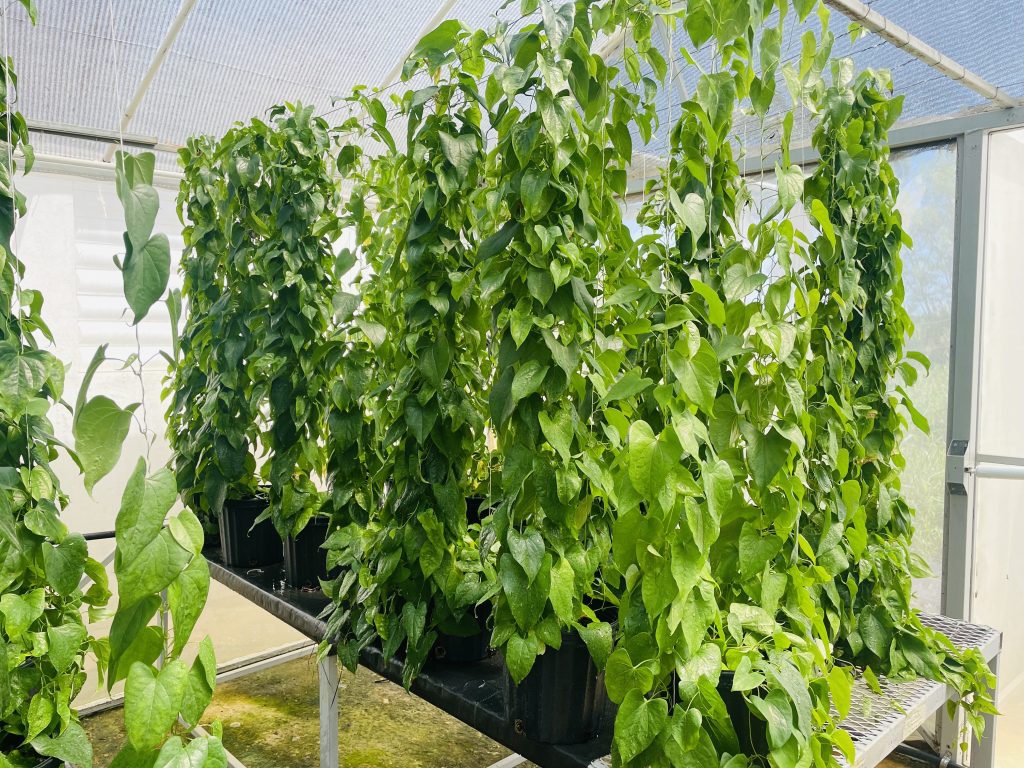
Credits: Merari Rivera
Can Technology Save the Yam?
Dr Feliciano-Rivera’s team used an advanced tissue culture technology, where plants are intermittently immersed in a nutrient solution known as Temporary Immersion Bioreactor System (TIBS). This system holds the sterile plant material and periodically immerses it into nutrient-rich liquid at a rate set by the scientists. The nutrients stimulate the plants to grow, and when large enough, the plants can be removed and eventually grown in regular soil or compost. It is a more productive way to grow plant material than the older micropropagation method of placing the plantlets onto a solid jelly-like material containing the nutrients and leaving them to grow.
The experimental findings have been encouraging. Dr Feliciano-Rivera’s team found that by using this propagation system, they were able to produce more vigorous plants and disease-free yam seeds of a higher quality than those grown on solid media and conventional propagation systems.
TIBS is faster and has a higher multiplication rate (meaning it can produce more plants more quickly). The experiments have revealed the best timings, temperatures, and nutritional mixtures needed to produce healthy yam plantlets in the laboratory. The team is now working on producing disease-free yam seed for local farmers using the temporary immersion bioreactor system and, excitingly, is moving forward to the next phase of their project focused on the importance of yams in food security on the Island.
What’s Next for the Yam?
Dr Feliciano-Rivera and her colleagues now hope to scale up the production of disease-free yam plants so that good-quality seeds can be produced and distributed to farmers in Puerto Rico. They are also investigating new protocols for the harvest and storage of the yam crop to help avoid losses caused by diseases that affect the crop after they have been harvested, such as fungal and nematode infections. They hope that introducing the new healthy seeds and better storage methods can increase the production of this vital nutritional crop and help the Island become more self-sufficient.
The team will also implement a training program for local farmers, including education about yam growth, harvest, nutrition, and identifying and managing diseases. This should help ensure that Puerto Rico’s yam is of better quality in the hands of our farmers. In turn, this will increase the resilience of the Puerto Rican people to deal with natural disasters, which are becoming ever more frequent due to global climate change. The yam will be safe in the hands of the experts working hard to save it and in the hands of our farmers.
SHARE
DOWNLOAD E-BOOK
REFERENCE
https://doi.org/10.33548/SCIENTIA1003
MEET THE RESEARCHER
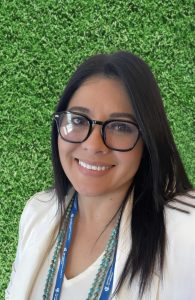
Dr Merari Feliciano-Rivera
College of Agricultural Sciences
University of Puerto Rico, Mayagüez Campus
Puerto Rico
Dr Merari Feliciano-Riviera graduated from the University of Puerto Rico with a BS in Agricultural Education and an MS in Crop Protection. After gaining a Lyman T. Johnson scholarship, she studied for her PhD in Plant pathology at the University of Kentucky, USA, which she completed in 2011. Dr Feliciano-Riviera is currently a professor at the University of Puerto Rico, where she teaches undergraduate and graduate students about plant pathology, biotechnology, and molecular plant pathology. She also served as a University Senator from 2021 to 2022 and has been the mentor of undergraduate and graduate students on several research projects. She has received millions of dollars in several grants funded by the US Department of Agriculture to develop a research programme focused on disease management of various pests and diseases common in Puerto Rican crops. Dr Feliciano-Riviera is also the Principal Investigator at the Biotechnology and Plant Pathology Lab of the Agricultural Experiment Station of Isabela, PR. She has been honoured with several awards for her scientific presentations at national conferences.
CONTACT
W: www.researchgate.net/profile/Merari-Feliciano-Rivera
KEY COLLABORATORS
Mildred Cortés, PhD, University of Puerto Rico, Mayagüez Campus
Yanira Miranda-Cortés, MS, Research Technician, University of Puerto Rico, Mayagüez Campus
Jesús M. Cardona, University of Puerto Rico
Martha C. Giraldo Zapata, PhD, University of Puerto Rico
Agenol González Vélez, MS, University of Puerto Rico
FUNDING
This work is supported by the USDA National Institute of Food and Agriculture, Hatch project 7001527.
FURTHER READING
YM Cortés, Evaluación de métodos de propagación de Dioscorea spp. para aumentar la disponibilidad de semilla libre de enfermedades [Evaluation of propagation methods of Dioscorea spp. to increase the availability of disease-free seed], Master’s thesis, 2019, University of Puerto Rico, Mayagüez campus.
S Fuentes-Aponte, M Feliciano-Rivera, LI Rivera-Vargas, A González-Vélez, First report of Colletotrichum alatae on water yam (Dioscorea alata) causing leaf anthracnose in Puerto Rico. The Journal of Agriculture of the University of Puerto Rico, 2021, 105 (2), 269–271. DOI: https://doi.org/10.46429/jaupr.v105i2.20087
M Feliciano-Rivera, Towards Sustainable Yam Production in Puerto Rico. Scientia, E-book, 2018. DOI: https://doi.org/10.26320/SCIENTIA265
-web-resources/image/Headshot_IMG_8555_Original.png)

REPUBLISH OUR ARTICLES
We encourage all formats of sharing and republishing of our articles. Whether you want to host on your website, publication or blog, we welcome this. Find out more
Creative Commons Licence (CC BY 4.0)
This work is licensed under a Creative Commons Attribution 4.0 International License. 
What does this mean?
Share: You can copy and redistribute the material in any medium or format
Adapt: You can change, and build upon the material for any purpose, even commercially.
Credit: You must give appropriate credit, provide a link to the license, and indicate if changes were made.
SUBSCRIBE NOW
Follow Us
MORE ARTICLES YOU MAY LIKE
Dr L Donald Duke | Riding the Storm: How Nature-Based Solutions Can Help Tackle Flooding in Southwest Florida
Florida grapples with mounting challenges related to inland flooding due to heavy precipitation, along with coastal flooding from rising sea levels and coastal storms. One important approach to address precipitation-originating flooding is to embrace land use practices runoff management in the upstream portions of at-risk watersheds, where sustainable design can relieve the pressures on drainage systems from continuing dense urban development in the low-lying Florida landscape. Dr L Donald Duke, from The Water School at Florida Gulf Coast University, plays a pivotal role in this endeavour. His work encompasses creating and evaluating flood-resilient land use practices and planning to manage stormwater runoff on the watershed scale.
Improving Food Safety of Hydroponic Leafy Greens
Hydroponic farming is experiencing rapid growth worldwide, offering a sustainable and efficient method of producing fresh, nutrient-rich crops. However, the unique conditions of hydroponic systems also present complex food safety challenges. Dr Sanja Ilic and Dr Melanie Lewis Ivey, researchers at The Ohio State University, are at the forefront of efforts to understand and mitigate the risks of human pathogen contamination in commercial hydroponic production. Their pioneering work is providing crucial insights and practical guidance to help ensure the safety and nutritional value of hydroponically grown leafy greens.
Dr Yasjka Meijer | Monitoring Greenhouse Gas Emissions from Space: The Copernicus CO2M Mission
Atmospheric concentrations of carbon dioxide (CO2) and methane (CH4) have been steadily rising due to human activities, contributing to global climate change. Dr Yasjka Meijer from the European Space Agency is responsible for the objectives and requirements of the Copernicus Anthropogenic Carbon Dioxide Monitoring (CO2M) mission – a constellation of satellites that will enable the monitoring of anthropogenic greenhouse gas emissions from space with unprecedented accuracy and detail. This groundbreaking mission aims to support international efforts to reduce emissions and combat climate change.
Renewable Fuel for a Generation of Green Batteries
Revolutionizing energy production has been integral to combatting climate change and reducing our dependence on limited natural resources, but complementary advances in energy storage have been lacking. Dr Thomas Guarr and Dr David Hickey from Michigan State University lead their team in investigating a counterintuitive molecular mechanism which could support a wave of green, renewable, and cheap batteries. If practical, this technology might be the crucial leap towards an entirely green energy system.

